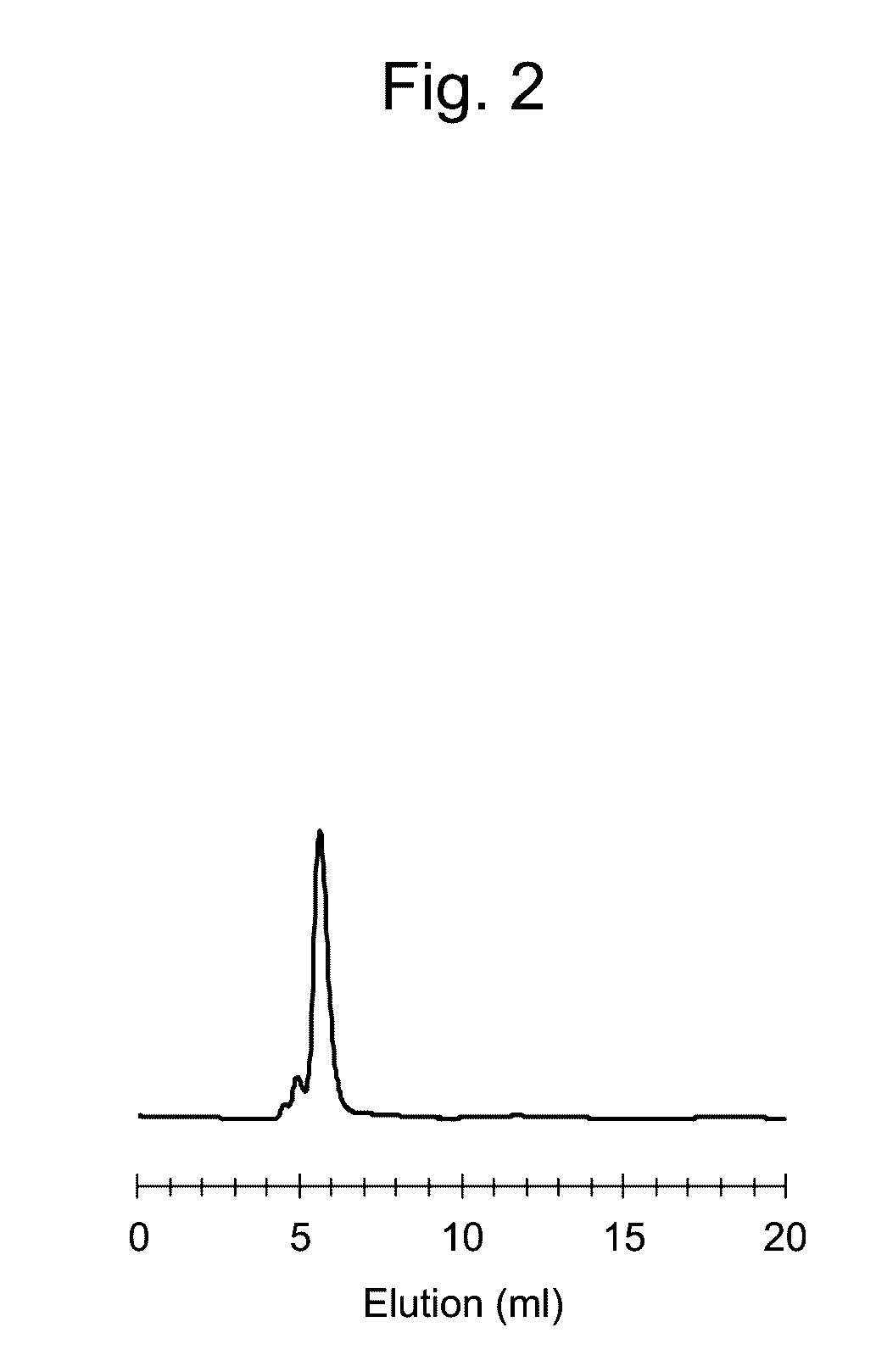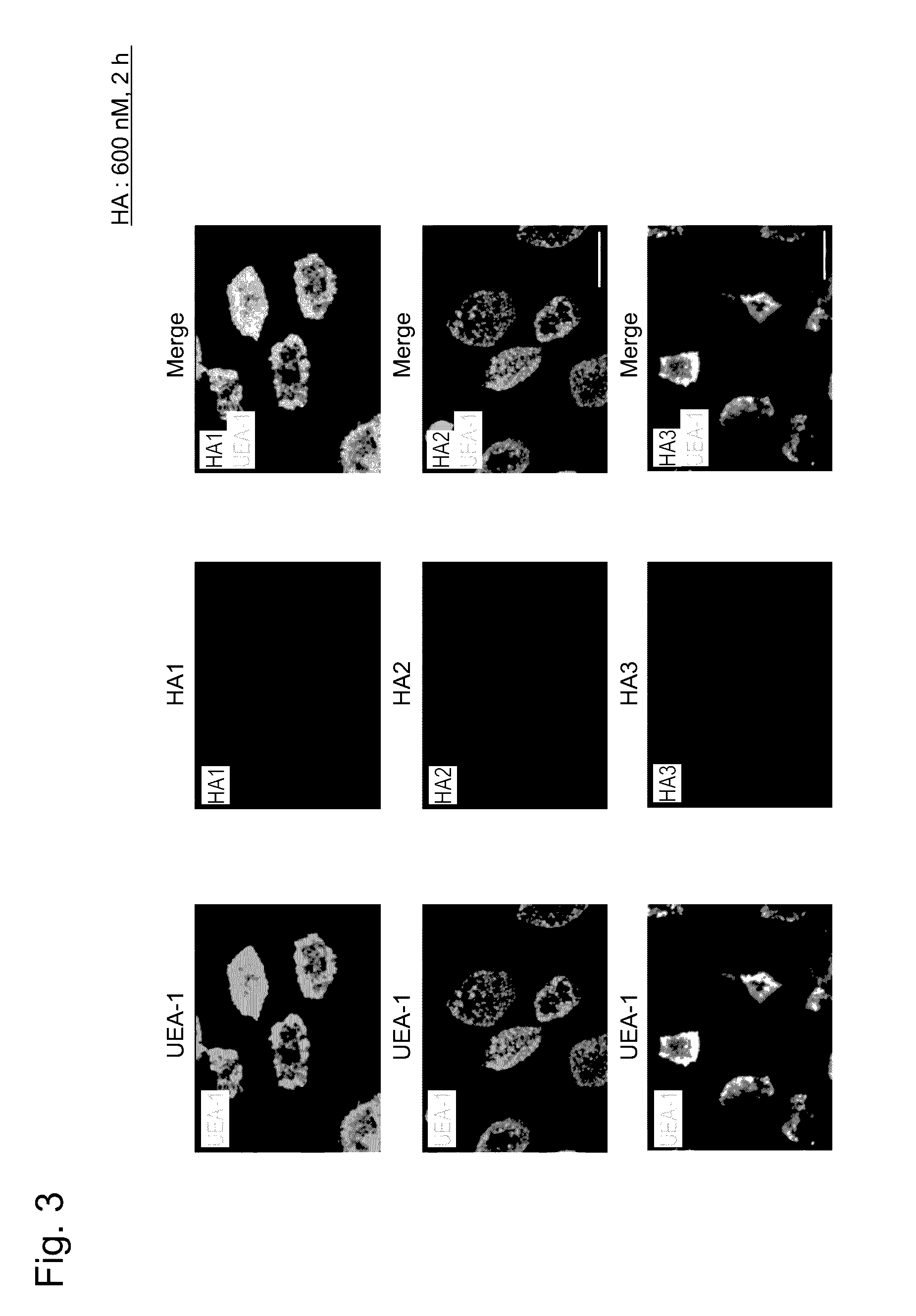Adjuvant for mucosal vaccine
a technology for mucosal vaccine and adjuvant, which is applied in the direction of antibody medical ingredients, drug compositions, and immunological disorders, can solve the problems of ct or lt development of mucosal adjuvants that are difficult in terms of safety, and are satisfactory for mucosal adjuvants in terms of safety
- Summary
- Abstract
- Description
- Claims
- Application Information
AI Technical Summary
Benefits of technology
Problems solved by technology
Method used
Image
Examples
example 1
Preparation of Botulinus HA (BHA) Complex
[0055]The botulinus HA (BHA) complex was prepared in the manner described below.
(1) Preparation of Plasmids
[0056]The genes encoding the proteins of the botulinus HA subcomponents (BHA1, BHA2, and BHA3) (BHA1: a protein consisting of amino acids 7 to 294 of the amino acid sequence as shown in SEQ ID NO: 1; BHA2: a protein consisting of amino acids 2 to 146 of the amino acid sequence as shown in SEQ ID NO: 2; and BHA3: a protein consisting of amino acids 19 to 626 of the amino acid sequence as shown in SEQ ID NO: 3) were amplified by PCR from genomic DNA of the Clostridium botulinum B-Okra strain as a template using the primers described below.
(Primers for BHA1 amplification)BHA1 forward primer: (SEQ ID NO: 9)cactataagcttatccaaaattcattaaatg BHA1 reverse primer: (SEQ ID NO: 10)gttgataggtaccttatgggttactcatag (Primers for BHA2 amplification)BHA forward primer: (SEQ ID NO: 11)tgaataagctttcagctgaaagaacttttc BHA2 reverse primer: (SEQ ID NO: 12)cacttt...
example 2
Interaction Between M Cell and Botulinus HA Subcomponent Alone or Complex of Botulinus HA Subcomponents
[0062]HA1, HA2, and HA3 of botulinus type A (600 nM each) were labeled with Alexa 568 and injected into ligated intestinal loop of the mouse. Two hours later, HA subcomponent localization was observed under a confocal microscope. M cells were stained with FITC-labeled UEA-1. Neither M-cell binding nor transcytosis was substantially observed as a result when HA1, HA2, or HA3 alone was used (FIG. 3).
[0063]Separately, the HA2+3 complex and the HA1+2+3 complex of botulinus type A (600 nM each) were labeled with Alexa 568 and injected into ligated intestinal loop of the mouse. Two hours later, localization of complexes was observed under a confocal microscope. M cells were stained with FITC-labeled UEA-1. Neither M-cell binding nor transcytosis was substantially observed as a result when the HA2+3 complex was used. As with the case of native 16S toxin, M-cell binding and transcytosis we...
example 3
Nasal Adjuvant Effects of BHA Complex Using Ovalbumin (OVA)
[0064]With the use of model antigens (ovalbumin, OVA), the efficacy of botulinus HA (BHA) as a mucosal vaccine adjuvant was inspected in the mouse with intranasal administration system. The BHA complex (BHA) prepared in Example 1 was used as BHA. OVA (5 μg only), OVA (5 μg)+BHA (15 μg), and OVA (5 μg)+cholera toxin B subunit (2 μg) (as the positive control) were intranasally administered to BALB / c mice (6-week-old; a group of 3 individuals) at intervals of one week (at day 0, day 7, day 14, day 21, and day 28), and five times of administration was totally carried out. Production of OVA-specific IgG in the sera, that of OVA-specific IgA in the nasal cavity lavage, and that of OVA-specific IgA in bronchoalveolar lavage were assayed by ELISA on day 34.
[0065]The results are shown in FIG. 5. Production of IgA was not observed in any nasal cavity lavage or bronchoalveolar lavage in the group to which OVA alone had been administere...
PUM
| Property | Measurement | Unit |
|---|---|---|
| temperature | aaaaa | aaaaa |
| concentration | aaaaa | aaaaa |
| time | aaaaa | aaaaa |
Abstract
Description
Claims
Application Information
 Login to View More
Login to View More - R&D
- Intellectual Property
- Life Sciences
- Materials
- Tech Scout
- Unparalleled Data Quality
- Higher Quality Content
- 60% Fewer Hallucinations
Browse by: Latest US Patents, China's latest patents, Technical Efficacy Thesaurus, Application Domain, Technology Topic, Popular Technical Reports.
© 2025 PatSnap. All rights reserved.Legal|Privacy policy|Modern Slavery Act Transparency Statement|Sitemap|About US| Contact US: help@patsnap.com



